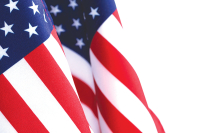Finally, back to school for all

I’ve missed chaotic mornings fighting for the bathroom, looking for shoes under beds, packing lunches, slinging bagels in the toaster and yelling for kids to get in the car. After a year of strangeness, all students are back in school, and it’s offering a thirst-quenching sense of normalcy.
In March 2020, when our local system canceled school for two weeks, it seemed like a long time to keep kids home. It’s interesting how one’s perspective can change with hindsight. I remember last year wondering how we would survive two weeks of virtual schooling while trying to work and function. But, after all this time, the pandemic has taught us that we do what we have to do, even if it’s cumbersome and uncomfortable.
Humans are truly an adaptive species.
I know that everyone is not happy with the decision to send students back full-time. Last fall, I was uncertain whether children should be back in the classroom. The vaccine was still in experimental mode and we were unclear how rapidly kids transmit or if they would become seriously ill. There were many unknowns.
As a former teacher, I cannot imagine how hard this year has been on educators. Whether online or in person, they have been extraordinarily essential to the well being of our nation’s children. Even over a computer screen, an attuned teacher can tell if a student is not doing well, has not eaten or needs an intervention. It’s not the same as seeing their faces in person, but nonetheless, maintaining that connection between teachers and students has been paramount during the pandemic.
All these months later, several factors are giving me confidence to send all students back to the classroom. My youngest son is in third grade. Near the start of this school year, elementary levels chose to go back full-time. Middle and high schools employed a hybrid model, where students were in-person one week and remote the next week. This allowed those schools to stay at half capacity.
Related Items
I’ve watched with awe how my child’s elementary school has handled schooling during a pandemic. Via strict mask rules, social distancing, temperature checks, sanitization, contact tracing and enforcing quarantine for exposed or sick students and staff, they have done a phenomenal job.
With no dances, programs, big events or extracurricular activities, it’s certainly been a different type of school year for my little guy, but he and his classmates have made the best of it. He loves his teachers and friends. He gets in the car each afternoon and chatters about his day. When in car line, I always smile to myself as I see all the kids, even kindergarteners, wearing their masks snug on their faces. People said the littlest students wouldn’t follow COVID-19 guidelines, but they have been troopers. Even the youngest among us will do what’s right with guidance from the adults in their lives.
Vaccinations are also bolstering my confidence. I don’t have exact numbers, but I’ve heard and read that many educators are now vaccinated. Similarly, as time goes on, more and more people of all ages and professions are getting vaccinated which helps with herd immunity.
Lastly, the boost in mental health for students is a motivating factor. It’s common knowledge that many kids only eat warm meals when they are at school. Further, numerous students benefit from the socialization a school offers and the kind, nurturing mentorship of the staff in the building.
The CDC offers the following key points when it comes to reopening schools full-time.
1. Evidence suggests that many K-12 schools that have strictly implemented prevention strategies have been able to safely open for in-person instruction and remain open.
2. CDC’s K-12 operational strategy presents a pathway for schools to provide in-person instruction safely through consistent use of prevention strategies, including universal and correct use of masks and physical distancing.
3. All schools should implement and layer prevention strategies and should prioritize universal and correct use of masks and physical distancing.
4. Testing to identify individuals with SARS-CoV-2 infection and vaccination for teachers and staff provide additional layers of COVID-19 protection in schools.
In the same document, the CDC provides this comprehensive statement: “Schools are an important part of the infrastructure of communities, as they provide safe and supportive learning environments for students, employ teachers and other staff, and enable parents, guardians, and caregivers to work. Many students, staff, and caregivers are either missing or have had interruptions in services due to school building closures and virtual and hybrid learning. Evidence suggests that many K–12 schools that have strictly implemented prevention strategies have been able to safely open for in-person instruction and remain open.”
Again, I realize there are people who feel it’s not time to send students back, and that’s OK. As a society, we’re going to have varying opinions on the matter. But for me personally, I am grateful to see the smiles on my kids’ faces now that mornings feel normal and they get to see classmates they’ve missed for a year. As their mom, this feels so good.
(Susanna Shetley is an editor, writer and digital media specialist for The Smoky Mountain News, Smoky Mountain Living magazine and Mountain South Media. This email address is being protected from spambots. You need JavaScript enabled to view it.)









